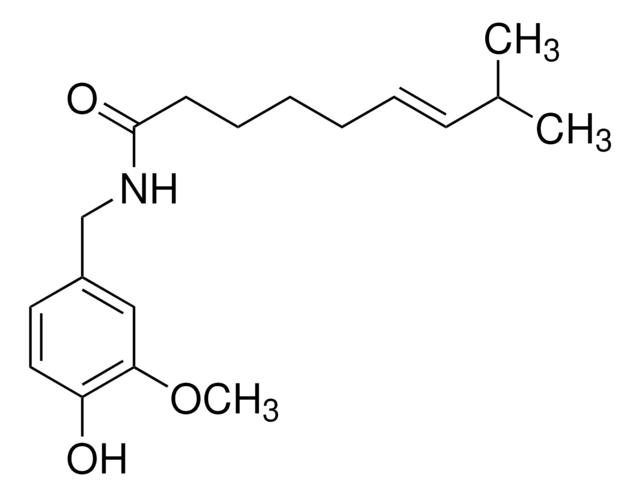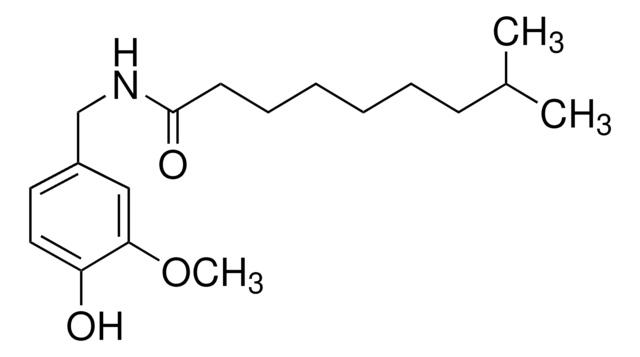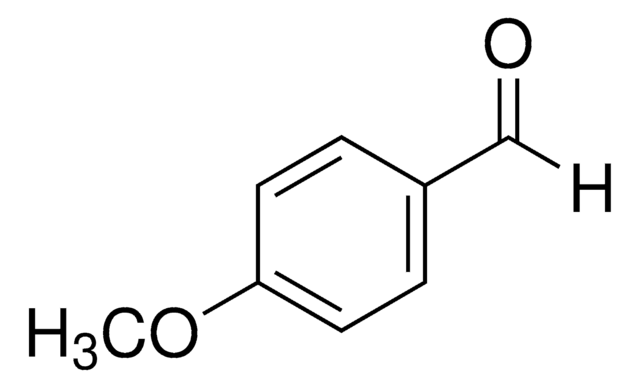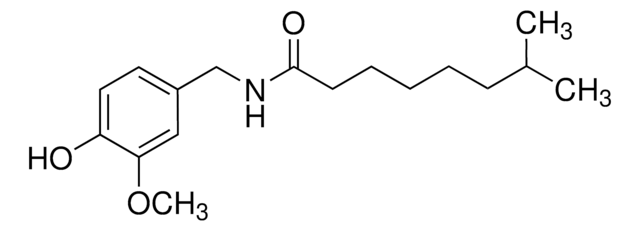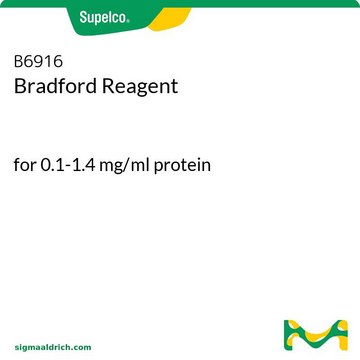M1022
Dihydrocapsaicin
from Capsicum sp., ≥85% (HPLC), powder, VR1 vanilloid receptor agonist
Synonym(s):
6,7-Dihydrocapsaicin, 8-Methyl-N-vanillylnonanamide, N-[(4-Hydroxy-3-methoxyphenyl)methyl]-8-methylnonenamide
About This Item
Recommended Products
Product Name
Dihydrocapsaicin, from Capsicum sp., ≥85%
biological source
Capsicum sp.
Quality Level
Assay
≥85%
storage temp.
2-8°C
SMILES string
COc1cc(CNC(=O)CCCCCCC(C)C)ccc1O
InChI
1S/C18H29NO3/c1-14(2)8-6-4-5-7-9-18(21)19-13-15-10-11-16(20)17(12-15)22-3/h10-12,14,20H,4-9,13H2,1-3H3,(H,19,21)
InChI key
XJQPQKLURWNAAH-UHFFFAOYSA-N
Gene Information
human ... TRPV1(7442)
rat ... Trpv4(66026)
Looking for similar products? Visit Product Comparison Guide
Application
- as a standard to analyze the level of dihydrocapsaicin in endogenous An2 and capsaicin synthase silenced fruits
- as an external standard to determine the variability in capsaicinoid content in different landraces of capsicum
- in the activation or ablation of capsaicin-sensitive primary afferents (CSPA) fibres
Biochem/physiol Actions
Linkage
Signal Word
Danger
Hazard Statements
Precautionary Statements
Hazard Classifications
Acute Tox. 2 Oral - Eye Irrit. 2 - Skin Irrit. 2 - STOT SE 3
Target Organs
Respiratory system
Storage Class Code
6.1A - Combustible acute toxic Cat. 1 and 2 / very toxic hazardous materials
WGK
WGK 3
Flash Point(F)
Not applicable
Flash Point(C)
Not applicable
Personal Protective Equipment
Regulatory Information
Choose from one of the most recent versions:
Already Own This Product?
Find documentation for the products that you have recently purchased in the Document Library.
Our team of scientists has experience in all areas of research including Life Science, Material Science, Chemical Synthesis, Chromatography, Analytical and many others.
Contact Technical Service